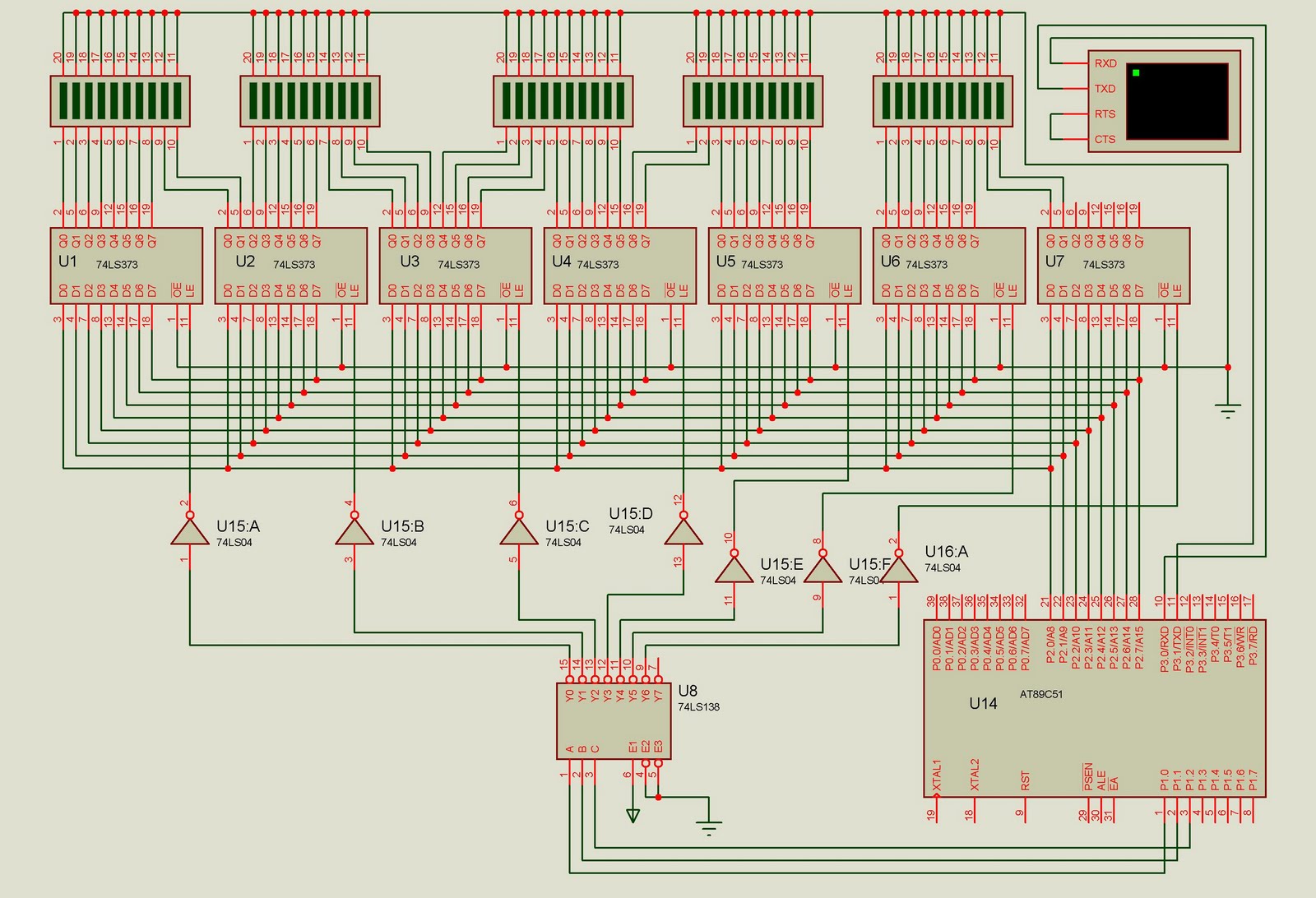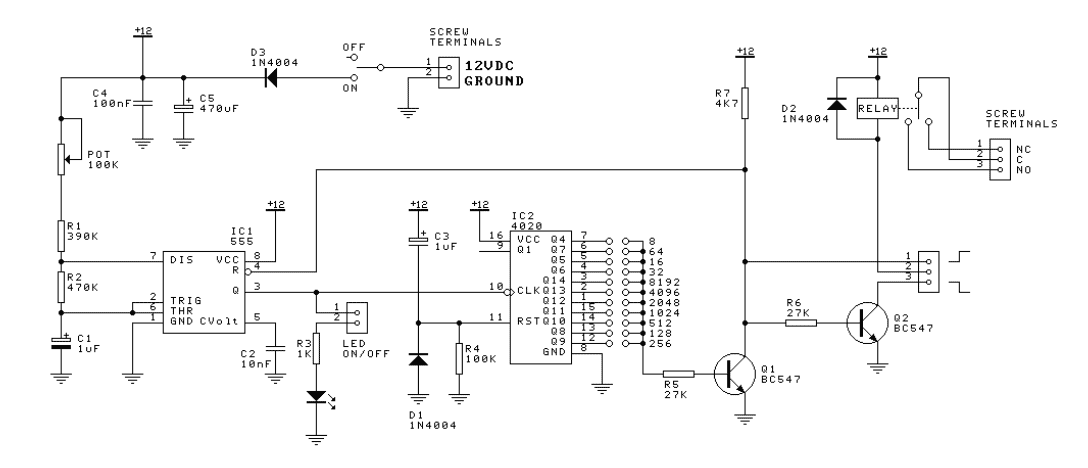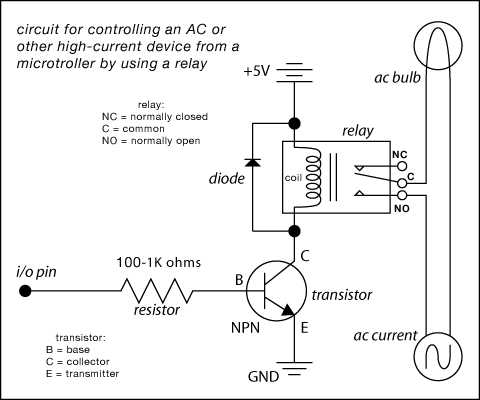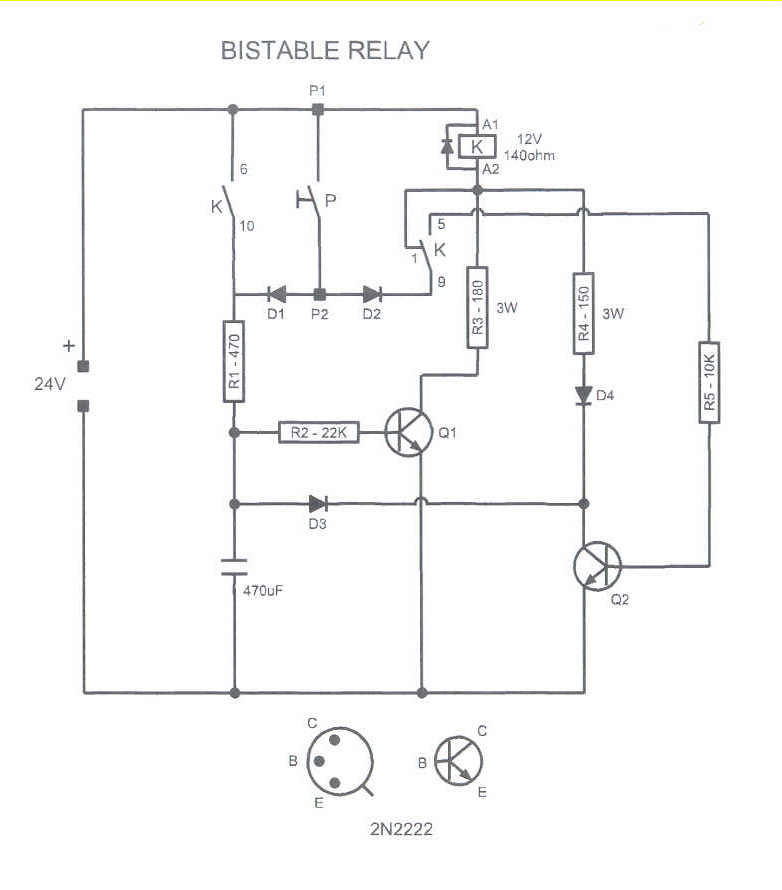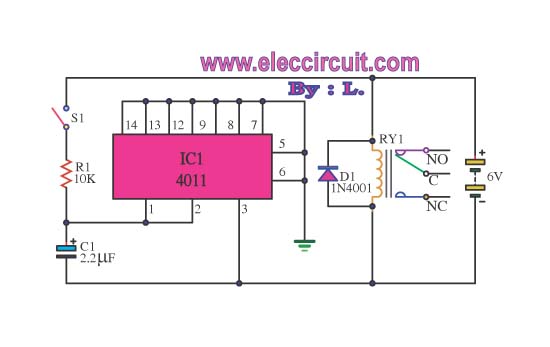
bypass which improves the ability to resist surging of relay contact
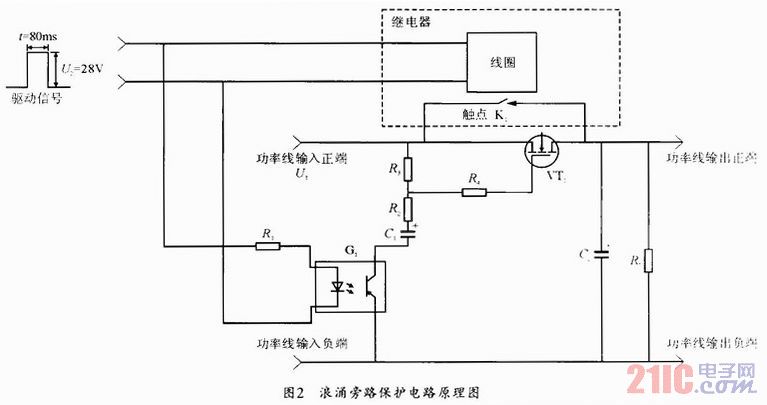
During the power-up of the apparatus, the capacitor is primarily responsible for the emergence of surge current. The schematic diagram of the principle is illustrated in Fig. 1. After K1 closes, the capacitor begins to charge, assuming that the direct current power supply provides a sufficiently large electric current and has negligible internal resistance. The resistance at the switch K1 and the connecting wires is also negligible. During the charging of the capacitor, the surge current can be approximately calculated using a specific formula. Although the equivalent series inductance (ESL) of the electric capacity apparatus has some suppression effect on the input surge current, its inductance is minimal, and thus this suppression can be disregarded. Typically, capacitors exhibit low equivalent series resistance (ESR); for instance, at 100 kHz, the ESR of a liquid tantalum capacitor is usually several hundred milliohms, polyester capacitors show dozens of milliohms, and ceramic capacitors have an ESR of several milliohms. Consequently, during the capacitor's power-up, a significant surge current is generated. Similar characteristics can be observed in other devices or components during power-up, such as storage batteries, which can produce surge currents exceeding one hundred amperes when charging. After the driving signal is applied, the power-up of the coil activates the electrical relay, initiating mechanical movement with a dwell time of 5-15 ms. The surge bypass protective circuit synchronizes with the relay coil and responds to the driving signal. Before G1 is activated, the grid voltage of VT1 is equal to the line voltage U1, placing VT1 in a cutoff state. Once G1 is turned on, the power line voltage U1 charges the capacitor C1 through resistors R2 and R3. During the charging phase of C1, the grid voltage of VT1 is calculated using a specific formula, disregarding the feed-through time of the optocoupler, and at this point, VT1 enters a conducting state. As the voltage across C1 rises, the grid voltage of VT1 also increases. Once C1 is fully charged, the grid voltage of VT1 equals the line voltage U1, and VT1 returns to a cutoff state. The turn-on time of the VT1 transistor depends on the parameters of R2, R3, C1, and the threshold voltage of the VT1 grid, typically neglecting the feed-through time of the optocoupler, which is usually less than 1 second. The turn-on time can be calculated using another formula. The driving signal for the relay is a pulse signal, with a high-level duration of t1 at 80 ms. When the pulse signal is high, and neglecting the feed-through time of the optocoupler, VT1 immediately enters a conducting state. Conversely, when the pulse signal is low, neglecting the cutoff time of the optocoupler, VT1 immediately returns to a cutoff state. If the calculated turn-on time is less than the high-level duration of the driving signal, then it can be determined using the formula. If the calculated turn-on time is greater than the high-level duration, then the turn-on time of VT1 equals the high-level duration. The electrical relay utilized is the Model 3JB20-3, which has a rated current of 15A, a contact pick-up time of 6.4 ms, and a nominal coil voltage of 28V. Assuming the power line voltage U1 is 28V, without employing the surge bypass protective circuit, the current waveform through contact K1 of the electrical apparatus exhibits a specific pattern.
The circuit involves a capacitor that plays a crucial role during the power-up phase, where it experiences a rapid increase in voltage, leading to a surge current. The surge current can be modeled using the relationship between capacitance, voltage, and resistance in the circuit. The initial surge is primarily influenced by the capacitor's ESR and ESL, which determine how quickly the capacitor can charge and how much current it can draw from the power supply.
As the relay coil is powered, it engages the mechanical components, allowing for the operation of the connected load. The timing of the relay activation is critical, as it must synchronize with the charging of the capacitor to prevent damage from excessive current. The circuit design includes protective features to manage the inrush current, ensuring that the components operate within safe limits. The use of appropriate resistors and capacitors in the charging circuit helps to control the rate at which the capacitor charges, thus managing the surge current effectively.
The design of the relay and its specifications, including the rated current and coil voltage, are selected to ensure compatibility with the overall circuit operation. The relay's quick response time is essential for applications requiring rapid switching, and the chosen model is suitable for handling the expected load. The circuit's performance can be verified through simulation or practical testing to ensure that it meets the design criteria and functions as intended during power-up scenarios.Generally, during power up of the apparatus, the capacitor is the main reason that surge current emerges, the synoptic diagram of the principle is shown in Fig. 1. Have it in the picture after K1 closes, the intersection of capacitor and C begin, charge, regard perfect condition direct current power supply can offer enough large electric current a
nd internal resistance for zero as direct current power supply, the intersection of switch and K1 and wire that connect, K1 contact resistance is zero, the wire thread is hindered as zero, At the time of condenser charge, the surge current produced can carry on approximate calculation according to formula 1. Though the electric capacity electric apparatus ESL has certain inhibit function on inputting the surge current, but inductance quantity is minor, inhibit function is minor, can neglect.
Usually the capacitor is ESR smaller, for example, measure under 100kHz, ESR of the liquid tantalum capacitor is generally several hundred milliohms, polyester capacitive ESR is generally dozens of milliohms, and the pottery capacitive FSR is generally several milliohms. So instant in the power up of capacitor, will produce the greater surge current. The above is the analysis that the surge current for the capacitor and produced at the time of power up carries on, if other apparatuses or components and parts have similar characteristics with the capacitor at the time of power up, will produce the greater surge current too, for instance, the storage battery will produce more than one hundred amperes of surge current under charging the form to read too.
After the driving signal is put through, the power up of coil, the sucking of electrical relay is combined into the mechanical movement course, dwell time 5- 15ms. Surging bypass protective circuit synchronizes with relay coil and receives the driving signal, before G1 was turned on, VT1 grid voltage input straight terminal voltage U1 with the line of power and is equal to, VT1 is the cutoff state.
After G1 turns on, the line of power inputs straight terminal voltage U1 charged for the electric capacity C1 by R2, R3, C1 is during the course of charging beginning, VT1 grid voltage calculated through formula 1, neglects the feed-through time of the light-coupled device, VT1 is a conducting state at this moment. Rise with C1 voltage constantly, VT1 grid voltage rises gradually, after C1 is charging and finishing, VT1 grid voltage inputs straight terminal voltage U1 with the line of power and is equal to, VT1 is the cutoff state, VT1 tube turns on time and depends on R2, R3 and C1 parameter and threshold voltage of VT1 tube grid, neglects the feed-through time usually less than 1 s of the photosensitive resister device, Turn on time and pass the formula 2 Calculate.
Usually, the driving signal of the electrical relay is a pulse signal, duration of high level t1 is 80ms, when the pulse signal is the high level, neglect the feed-through time of the light-coupled device, VT1 is a conducting state immediately; When the pulse signal is the low level, neglect the cut-off time of the light-coupled device, VT1 is a cutoff state immediately. 2If pass the formula 2 China calculates t and is smaller than high level duration of driving signal t1, then VT1 can be calculated through formula 2 while turning on time.
3If pass the formula 2 China calculates t and is greater than high level duration of driving signal t1, then it is equal to high level duration of driving signal t1 that VT1 turns on time. 3The electrical relay adopts the electrical relay of Model 3JB20-3, the rated current of single contact is 15A, the pick-up time of contact is 6.
4ms, the nominal voltage of the coil is 28V; 4Presume the line of power inputs straight terminal voltage U1 =28V, when not adopting the bypass protective circuit of surging, electric current waveform of adopting contact K1 of electric apparatus flows and has been sh 🔗 External reference
The circuit involves a capacitor that plays a crucial role during the power-up phase, where it experiences a rapid increase in voltage, leading to a surge current. The surge current can be modeled using the relationship between capacitance, voltage, and resistance in the circuit. The initial surge is primarily influenced by the capacitor's ESR and ESL, which determine how quickly the capacitor can charge and how much current it can draw from the power supply.
As the relay coil is powered, it engages the mechanical components, allowing for the operation of the connected load. The timing of the relay activation is critical, as it must synchronize with the charging of the capacitor to prevent damage from excessive current. The circuit design includes protective features to manage the inrush current, ensuring that the components operate within safe limits. The use of appropriate resistors and capacitors in the charging circuit helps to control the rate at which the capacitor charges, thus managing the surge current effectively.
The design of the relay and its specifications, including the rated current and coil voltage, are selected to ensure compatibility with the overall circuit operation. The relay's quick response time is essential for applications requiring rapid switching, and the chosen model is suitable for handling the expected load. The circuit's performance can be verified through simulation or practical testing to ensure that it meets the design criteria and functions as intended during power-up scenarios.Generally, during power up of the apparatus, the capacitor is the main reason that surge current emerges, the synoptic diagram of the principle is shown in Fig. 1. Have it in the picture after K1 closes, the intersection of capacitor and C begin, charge, regard perfect condition direct current power supply can offer enough large electric current a
nd internal resistance for zero as direct current power supply, the intersection of switch and K1 and wire that connect, K1 contact resistance is zero, the wire thread is hindered as zero, At the time of condenser charge, the surge current produced can carry on approximate calculation according to formula 1. Though the electric capacity electric apparatus ESL has certain inhibit function on inputting the surge current, but inductance quantity is minor, inhibit function is minor, can neglect.
Usually the capacitor is ESR smaller, for example, measure under 100kHz, ESR of the liquid tantalum capacitor is generally several hundred milliohms, polyester capacitive ESR is generally dozens of milliohms, and the pottery capacitive FSR is generally several milliohms. So instant in the power up of capacitor, will produce the greater surge current. The above is the analysis that the surge current for the capacitor and produced at the time of power up carries on, if other apparatuses or components and parts have similar characteristics with the capacitor at the time of power up, will produce the greater surge current too, for instance, the storage battery will produce more than one hundred amperes of surge current under charging the form to read too.
After the driving signal is put through, the power up of coil, the sucking of electrical relay is combined into the mechanical movement course, dwell time 5- 15ms. Surging bypass protective circuit synchronizes with relay coil and receives the driving signal, before G1 was turned on, VT1 grid voltage input straight terminal voltage U1 with the line of power and is equal to, VT1 is the cutoff state.
After G1 turns on, the line of power inputs straight terminal voltage U1 charged for the electric capacity C1 by R2, R3, C1 is during the course of charging beginning, VT1 grid voltage calculated through formula 1, neglects the feed-through time of the light-coupled device, VT1 is a conducting state at this moment. Rise with C1 voltage constantly, VT1 grid voltage rises gradually, after C1 is charging and finishing, VT1 grid voltage inputs straight terminal voltage U1 with the line of power and is equal to, VT1 is the cutoff state, VT1 tube turns on time and depends on R2, R3 and C1 parameter and threshold voltage of VT1 tube grid, neglects the feed-through time usually less than 1 s of the photosensitive resister device, Turn on time and pass the formula 2 Calculate.
Usually, the driving signal of the electrical relay is a pulse signal, duration of high level t1 is 80ms, when the pulse signal is the high level, neglect the feed-through time of the light-coupled device, VT1 is a conducting state immediately; When the pulse signal is the low level, neglect the cut-off time of the light-coupled device, VT1 is a cutoff state immediately. 2If pass the formula 2 China calculates t and is smaller than high level duration of driving signal t1, then VT1 can be calculated through formula 2 while turning on time.
3If pass the formula 2 China calculates t and is greater than high level duration of driving signal t1, then it is equal to high level duration of driving signal t1 that VT1 turns on time. 3The electrical relay adopts the electrical relay of Model 3JB20-3, the rated current of single contact is 15A, the pick-up time of contact is 6.
4ms, the nominal voltage of the coil is 28V; 4Presume the line of power inputs straight terminal voltage U1 =28V, when not adopting the bypass protective circuit of surging, electric current waveform of adopting contact K1 of electric apparatus flows and has been sh 🔗 External reference
